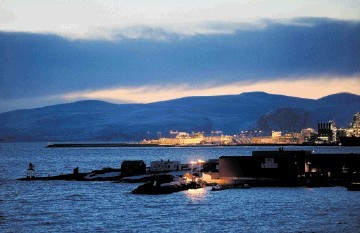
There have long been known challenges to exploring for oil and gas in the Arctic.
With resources thought to amount to one-fifth of the world’s remaining oil and gas reserves, however, and ever-increasing demand for energy from growing economies such as India, the exploitation of the icy Barents Sea region off the coast of Norway appears inevitable.
The Norwegian Petroleum Directorate this year offered up 86 blocks in its latest offshore licensing round, 72 of which are in the Barents.
Interest is already high. Last year, Statoil made its Barents Skrugard discovery, closely followed by nearby Havis.
Last week, Aberdeen-based Faroe Petroleum took a 12.5% stake in the high-impact Darwin prospect in the Barents Sea, a move it said fitted its strategy to build a position there.
Then yesterday, at ONS, Statoil unveiled plans for a nine-well exploration programme in the area.
“The challenge historically has been a combination of logistical, technological and political issues,” said Douglas-Westwood analyst and director Steven Robertson, however, some of these have been solved, he added.
“We have seen ice-class drilling rigs being built, ice-specific subsea production systems being developed and we have seen positive movements in terms of settling boundary disputes.
“There has also been some collaboration between Rosneft and Statoil over developing some projects,” he said.
There have been local concerns to Norway – such as potential damage to other mainstays of the economy, such as fishing, which have until recently kept much of the Barents closed to exploration.
But the Norwegians have proven they can do Arctic exploration and production. The world’s most northerly gas field, Snohvit, came online in 2007 and Eni’s Goliat oil field is due to start up in 2014.
Another issue has been that a large proportion of the hydrocarbons under the Arctic are thought to be gas.
Until recently, before the development of floating liquefied natural gas (FLNG) production, the prospect had been daunting; with the cost of getting gas to markets too costly too consider.
With gas now on the verge of a golden age, offering a cleaner fuel to increasingly scarce oil and nuclear in countries such as Japan, there are now eager markets. The development of FLNG has also offered an alternative opportunity to unlock fields.
For Tor Espedal, a senior partner at Norwegian oil and gas investment powerhouse Hitecvision, development of the Barents has the potential to change market dynamics, both in UK-Norway co-operation and new firms getting involved.
He said: “It will be a huge step both in the rig market, but also infrastructure development. Harsh-environment platforms and supply vessels will be needed 10 years down the road. You shouldn’t be surprised to see new industry groups establishing themselves.”
The larger prize could then be exporting the expertise developed in the harsh Barents waters to other parts of the world.
“But it is early days yet with only a small proportion of the Barents explored,” added Mr Robertson. “The real challenge will be the cost of working in these areas, which has been estimated to be double the cost of standard production systems in the North Sea or west Africa.”
How new markets for unconventional gas, which have changed market economics in North America, affect Europe is also yet to be seen.
Read more about Statoil’s Barents Sea exploration plans in Monday’s Energy supplement.
Recommended for you
